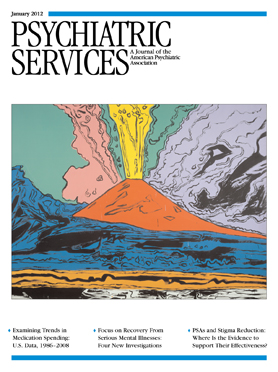An Analysis of the Slowdown in Growth of Spending for Psychiatric Drugs, 1986–2008
Abstract
Objective:
This study analyzed recent trends in spending on psychiatric prescription drugs and underlying factors that served as drivers of these changes.
Methods:
Data were collected from the MarketScan Commercial Claims and Encounters Database (1997–2008), Substance Abuse and Mental Health Services Administration spending estimates (1986–2005), and the Medical Expenditure Panel Survey (1997–2007). The trends in medication spending derived from the data were decomposed into three categories: percentage of enrollees who used psychiatric medications, days supplied per user, and cost per day supplied.
Results:
The average annual rate of growth in expenditures per enrollee slowed from 18.5% in 1997–2001 to 6.3% in 2001–2008. A decline in the growth rate of cost per day supplied, from 8% to 2%, accounted for 49% of the overall decline in spending growth, and a decline in the growth of the percentage of enrollees who used medication, from 7% to 2%, contributed 41% to the overall decline. There was a smaller change in days supplied per user, from 3% to 2%, that contributed 10% to the overall decline. The increased entry of generic medications, which constituted 70% of all psychiatric prescriptions by 2008, particularly generic antidepressants, was a key contributor to the slower growth in costs.
Conclusions:
Past high growth in psychiatric drug spending arising from growth in utilization of branded medications has declined significantly, which may have implications for access and new product investment. (Psychiatric Services 63:13–18, 2012)



